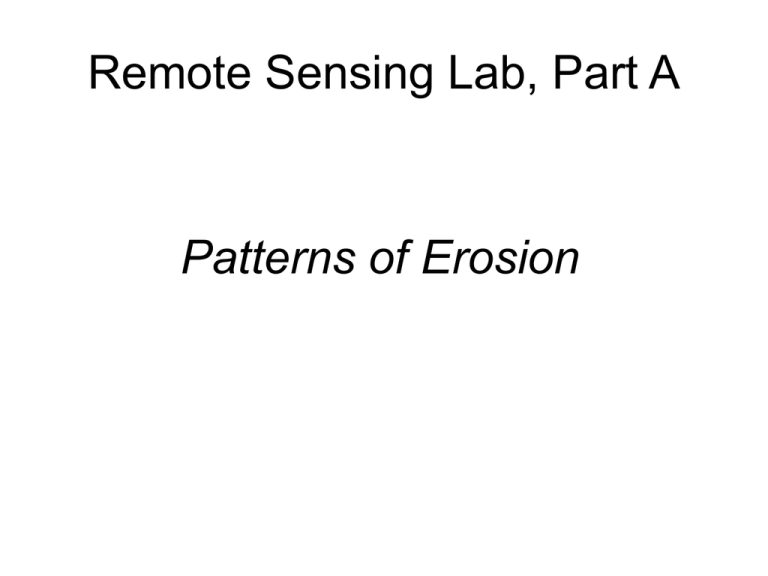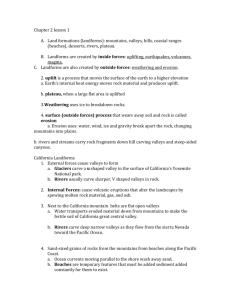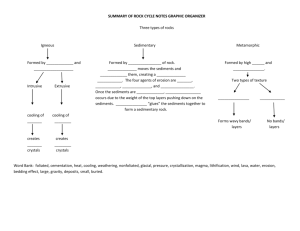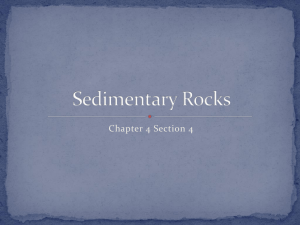Lab 6: Patterns of Erosion
advertisement

Remote Sensing Lab, Part A Patterns of Erosion Background The purpose of this lab in to develop an understanding of how fluvial (= river) erosion and the “fabric” of rock below the surface interact to produce landforms Fabric The earth’s crust is composed of numerous different kinds of rock, often in close proximity. Some rocks weather and erode faster than other The most easily erodable get washed away fastest, and tend to form valleys The most resistant rocks get washed away slowest, and tend to form the highlands Fabric due to sedimentary layers Very interesting landforms are formed when sedimentary layers are eroded, because its very typical for soft and hard rock layers to alternate (e.g. soft shale and hard sandstone). Many interesting cases occur, depending upon the configuration of the layers, which can be flat laying, dipping, folded and faulted. Exampe 1. Eroded edge of flat-lying sediments Example 2. A high angle fault that creates a steep fault scarp. Example 3: A low angle fault. Note that the steep slope is not directly due to faulting. Resistant rock Resistant rock Resistant rock easily erodable rock Example 4: Dipping sediments lead to parallel ridges and valleys valleys ridges Note that ridges are asymmetric in shape. One side is steep, one side gentle. This shape is called a hogback. Interaction of dip and folding makes for really beautiful landforms Erode Me ! Example 5: Dome and Example 6: Basin Folded Sediments, where the folds dip (=plunge) into the earth Example 7: Syncline (downwarped sediments) Example 8: Anticline (upwarped sediments) Instructions For each five areas: 1. Three images are provided for each area: Image 1: Location of the study area (its right in the middle) Image 2: The study area itself Image 3: The study area with the yellow line AB crossing it. Find the study area on Google’s satellite map feature and use it to view the area. Examine it at a variety of zoom levels. 2. Identify the main rivers and their direction of flow. Be careful not to confuse roads with rivers (but keep in mind that roads can follow river valleys). 3. Identify what parts of the region are topographically high and topographically low. Both the pattern of rivers and shadows can help. Instructions, continued 4. Make a full-page sketch of the area. Include rivers, valleys, canyons, ridges and a scale in kilometers. Identify the high ground and the low ground. 5. Which of the example landforms best approximates the landforms in the area? Site specific evidence. 6. Sketch a profile through the earth along line AB that shows what you think that the rock layers are there. Identify which layers are most and least erodable. 7. Describe briefly how the landforms might change as more erosion occurs. Area 1. In Wyoming Area 1. A Area 1. B Area 2. In the Indian Subcontinent Area 2. Area 2. A B Area 3. In Alaska Area 3. Area 3. A B Area 4. In Eastern North America Area 4. Area 4. A B Area 5. In Pakistan Area 5. Area 5. A B






